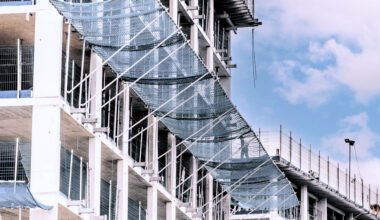
Architectural 3D modeling has revolutionized home design, planning, and construction by producing unique digital representations of systems. With the help of this technology, architecture could be made with more accuracy. Unlike traditional 2D blueprints, 3D fashions offer depth, texture, and spatial awareness. Stakeholders and clients can more easily imagine the final creation as a result. Once this training is completed, judgments are made based on experience and knowledge. When the architectural 3d modeling can be made on this basis, then there are fewer chances of layout changes being made later.
The Key Differences between 2D and 3D Modeling
The vital difference between 2D and 3D modeling lies in dimensional instance and capability. 2D modeling creates flat, two-dimensional drawings with the qualities of length and width (like traditional blueprints), while 3D modeling gives depth, producing low-cost virtual representations that may be turned around and regarded from any perspective.
Why Are Businesses Choosing Architectural BIM Modeling Services?
Businesses at some stage in the improvement and shape sectors are increasingly adopting architectural BIM modeling offerings due to the fact that they offer outstanding visual performance, accuracy, and price financial savings in comparison to traditional format methods. Unlike conventional 2D drawings or essential 3D modeling, BIM (Building Information Modeling) presents a reality-rich, smart 3D surrounding wherein each thing consists of genuine statistics about materials, dimensions, costs, and normal performance.
Top benefits of 3-D modeling in production and architecture.
Below, we find out the pinnacle advantages of three-D modeling in manufacturing and design.
1. Enhanced Collaboration among Teams
Better statement between architects, engineers, contractors, and clients is made probable by 3-D showing, which performances as a common language. Since real-time updates are made possible by cloud-based systems, the most new version is permanently in use. Errors brought on by misunderstandings and earlier drawings are thus decreased.
2. Increased Construction Accuracy and Efficiency
Inconsistencies between distinct drawings and devices are eliminated by 3-D modeling, which generates accurate floor plans, elevations, and sections directly from the virtual version. For specific measurements, contractors can rely on those standards.
3. Cost and Time Savings
By using 3D modeling, conflicts and format problems can be identified early on, preventing expensive remodels at an undetermined future date. Accurate material estimation is another benefit.
Types of 3D Architecture Modelling
Here are the forms of 3-D structure modeling:
1. Massing Models
The massing fashion is the straightforward volumetric form of a production that lacks distinctive architectural elements. This is a simple form of architecture.
2. Conceptual Design Models
Conceptual layout models help close the gap between the original idea and targeted enhancements. These 3D fashions communicate the architect’s creative and forward-thinking vision while also accommodating short iterations through simplified geometries and straightforward material representations.
3. Detailed Architectural Models
Every building addition is included in detailed architectural models, complete with the proper dimensions, composition, and textures. They help them understand the design’s reasoning. They are utilized for manufacturing documentation and customer approvals.
4. Structural Engineering Models
Models of structural engineering are widely used, particularly for load-bearing parts and structures. Using specific engineering data, these technical three-dimensional models include structural elements such as columns, beams, and foundations. Before more intricate models were created, structural engineers used these models to investigate alternate materials, analyze masses, and confirm the building’s stability. They often provide a comprehensive analysis by combining them with BIM software.
5. Photorealistic Rendering Models
Photorealistic rendering models are a choice for precise 3-D representations that simulate real-world materials, lighting, and environmental conditions. These fashions produce images and animations that may be, in fact, indistinguishable from pics, used frequently for advertising and marketing functions and layout competitions, the patron indicates.
Future Trends in Architectural 3D Modeling
Architectural 3-D modeling is increasingly merging with BIM, which affords information-rich layers to the model, collectively with value, fabric specifications, and protection requirements. This integration enhances lifecycle manipulation and operational efficiency for homes.
Conclusion
Architectural 3-D modeling is a game-changer in the AEC industry, supplying amazing precision, overall performance, and collaboration benefits. From early format ranges to final advent, this era ensures smoother workflows, greater economic savings, and better-quality results. As enhancements stay, their position in shaping the future of structure and introduction will best broaden extra mass.


